7 Powerful Facts About Depth of Discharge (DoD) You Must Know
Depth of Discharge (DoD): What It Means and Why It Matters for Battery Life
When it comes to battery performance and longevity, one of the most important—yet often misunderstood—metrics is Depth of Discharge (DoD). Whether you’re managing a solar energy system, using lithium-ion batteries for home storage, or simply trying to maximize your battery lifespan, understanding DoD is crucial.
In this article, we’ll explore what DoD means, how it’s calculated, and how it directly impacts cycle life, especially for LiFePO4 (Lithium Iron Phosphate) batteries. We’ll also demystify the 20/80 rule, and clarify the difference between DoD and State of Charge (SoC).
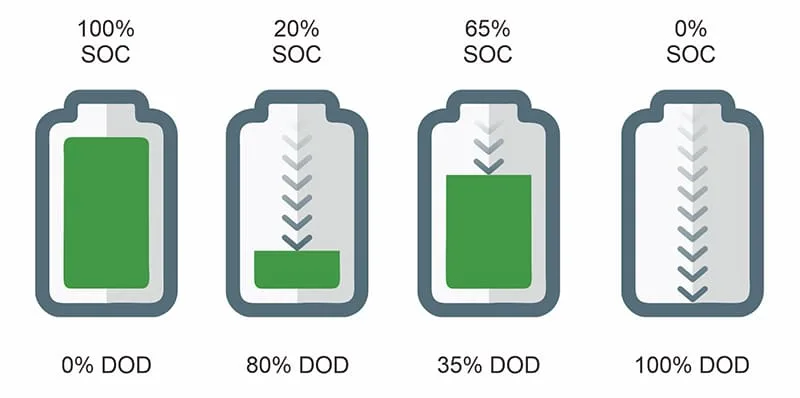
🔋 What Is Depth of Discharge (DoD)?
Depth of Discharge refers to the percentage of a battery’s total capacity that has been used. For example, if a 100Ah battery has discharged 80Ah, its DoD is 80%.
💡 Formula:
Depth of Discharge (%) = (Energy Discharged / Total Battery Capacity) × 100
🔁 Depth of Discharge vs Cycle Life
One of the most critical relationships in battery usage is between DoD and cycle life (the number of charge-discharge cycles a battery can undergo before its capacity drops below a usable level).
📊 General Trend:
| Depth of Discharge | Approx. Cycle Life (Li-ion) |
|---|---|
| 100% DoD | ~500 cycles |
| 80% DoD | ~800–1,000 cycles |
| 50% DoD | ~1,200–2,000 cycles |
| 20% DoD | ~3,000+ cycles |
Key Insight: The shallower the depth of discharge, the longer the battery lasts.

⚖️ Depth of Discharge vs State of Charge (SoC)
These two terms are often confused:
- Depth of Discharge (DoD): How much of the battery is used.
- State of Charge (SoC): How much charge is remaining.
They are complementary:
DoD (%) = 100 – SoC (%)
For example, if your battery has 30% SoC, it has a 70% DoD.
✅ What Is 80% Depth of Discharge?
An 80% DoD means you have used 80% of the battery’s capacity and left 20% in reserve. For many lithium-ion batteries, operating at around 80% DoD is a common practice to balance usable capacity and cycle life.
⚙️ The 20/80 Rule for Battery Life
This widely recommended rule of thumb suggests keeping your battery charge between 20% and 80%, which means:
- Never let it fall below 20% SoC (80% DoD).
- Don’t regularly charge it to 100%.
This practice can significantly increase battery longevity, particularly in lithium-ion chemistries.
🔬 Depth of Discharge in LiFePO4 Batteries
LiFePO4 batteries are especially known for their high cycle life even at higher DoDs.
| DoD (%) | Approx. Cycle Life (LiFePO4) |
|---|---|
| 100% | 2,000–4,000 cycles |
| 80% | 3,000–5,000 cycles |
| 50% | 5,000+ cycles |
Compared to other lithium-ion chemistries, LiFePO4 offers superior stability and longevity even when discharged deeply, making it ideal for solar energy storage and off-grid applications.
📈 Why Depth of Discharge Matters
Understanding and managing DoD allows users to:
- Maximize battery life
- Optimize return on investment
- Prevent over-discharge damage
- Improve energy efficiency in off-grid or hybrid systems
⚡ Final Thoughts
Whether you’re investing in a home solar energy system or deploying industrial-grade storage solutions, managing Depth of Discharge is key to maximizing performance and lifespan.
By keeping DoD within optimal ranges—especially with robust batteries like LiFePO4—you not only extend battery life but also protect your investment in renewable energy solutions.
Interested in high-quality LiFePO4 batteries designed for long life and high performance?
Contact us today to learn more about our range of advanced energy storage solutions.
5kWh 5kWh battery backup for home 10kWh LiFePO4 Batteries 10kWh Solar Battery Costs in Myanmar 15kWh LiFePO4 Batteries 15kWh LiFePO4 Battery for Yemen 25kWh Battery Systems 48V 100Ah China LiFePO4 Batteries 48V 280Ah LiFePO4 Battery 48V 300Ah 48V Lithium Batteries Best LiFePO4 Batteries Engineered for Middle East Desert Bulk Buy Home ESS Cheapest Home Battery Custom Household Batteries Direct Factory Custom Lithium Batteries DR Congo Overseas Warehouse energy storage battery Energy Storage Systems Grade A Battery Home Batteries for Dutch Families home energy storage Lead-Acid to Lithium LiFePO4 batteries LifePo4 battery LifePO4 Battery Technology LiFePO4 vs NMC Home ESS Lithium-Ion Battery Lithium-Ion Battery Manufacturers Lithium Battery Manufacturer Lithium Battery Revolution lithium ion battery Lowest Price Uganda Market Trends off-grid solution Reliable Home Battery Bulk Suppliers Revolutionize Business Power with Customizable BESS Scalable BESS Solutions for Industry Solar Battery Storage Solutions Solar Panel solar system Stacking All-in-One Top 10 Home Battery Alibaba Suppliers Verified Wall-Mounted Lithium Batteries Wholesale 314Ah LiFePO4 Batteries

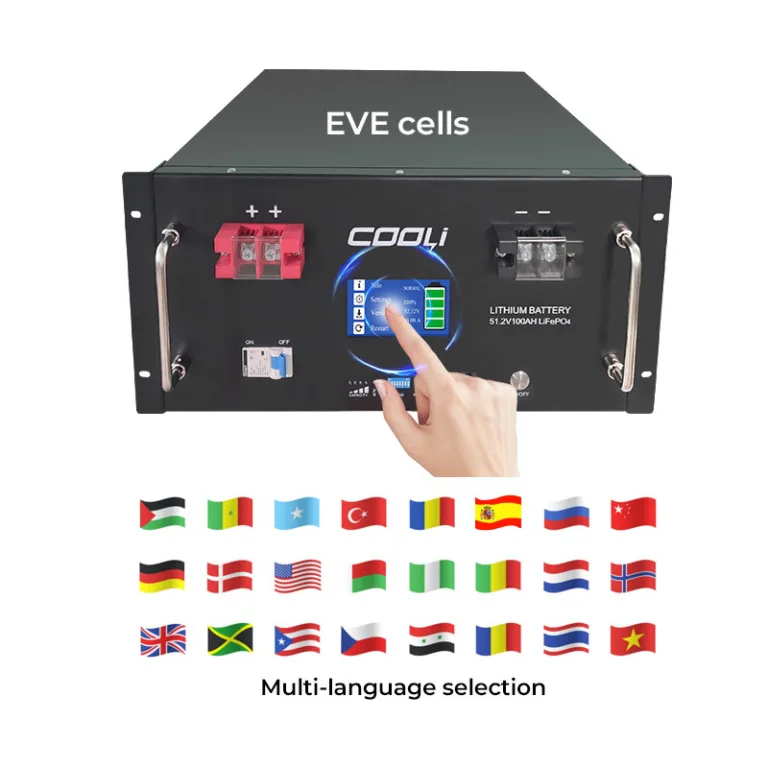

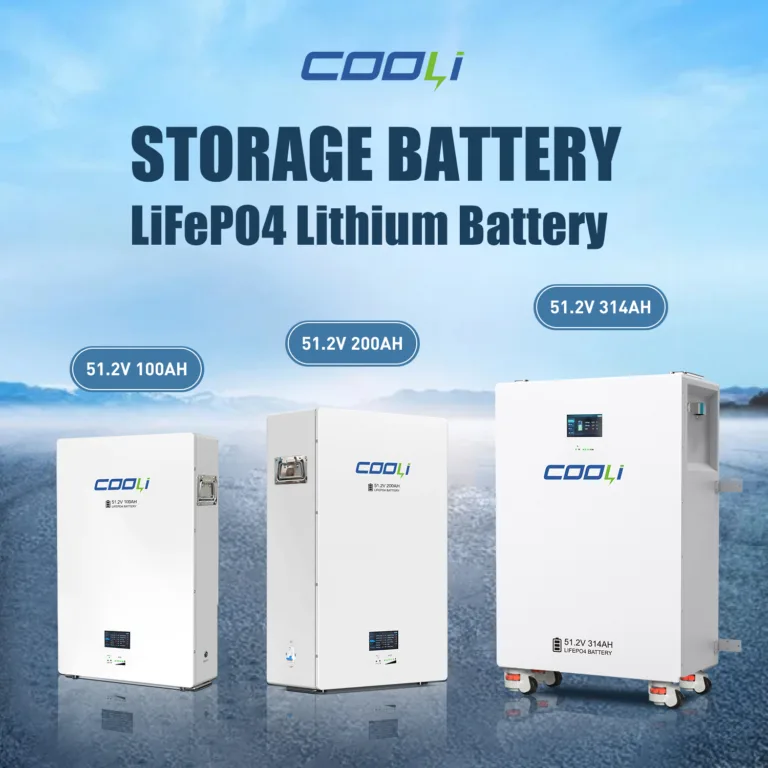
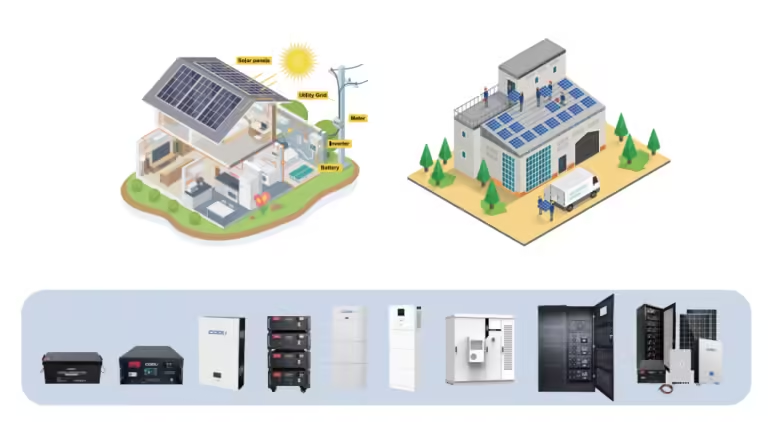
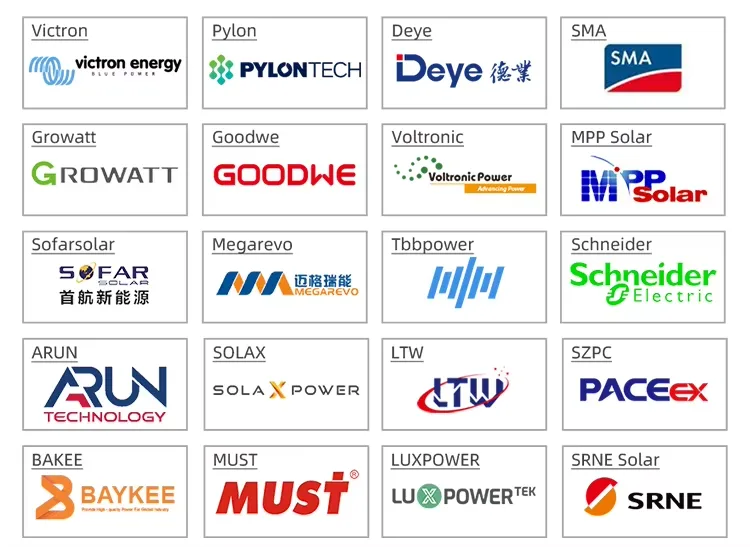
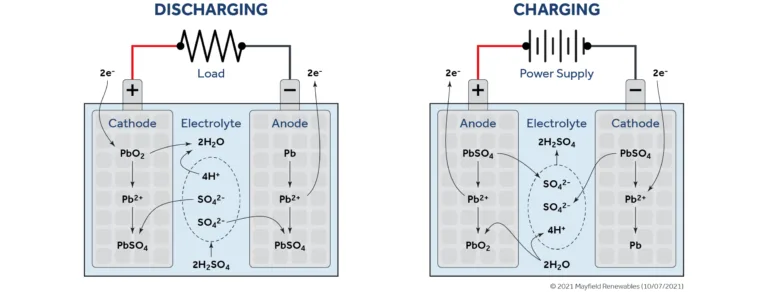
One Comment